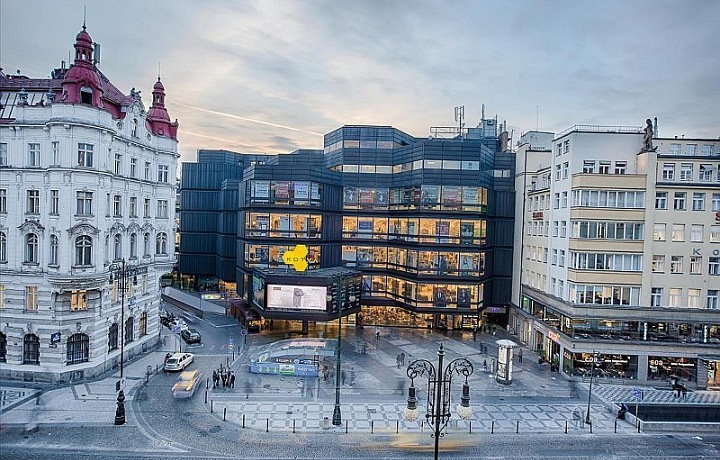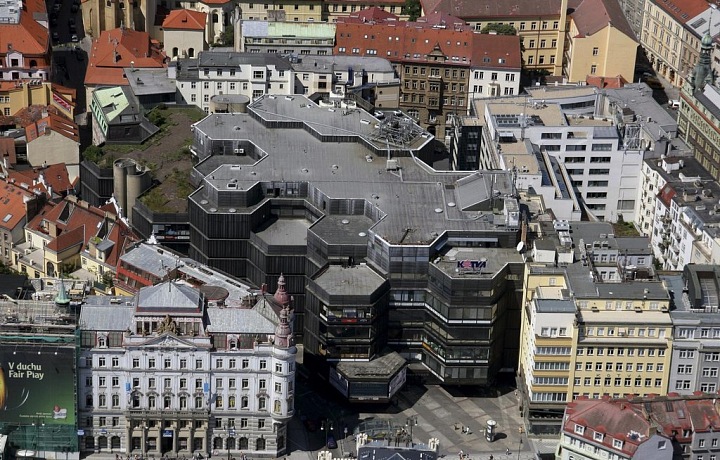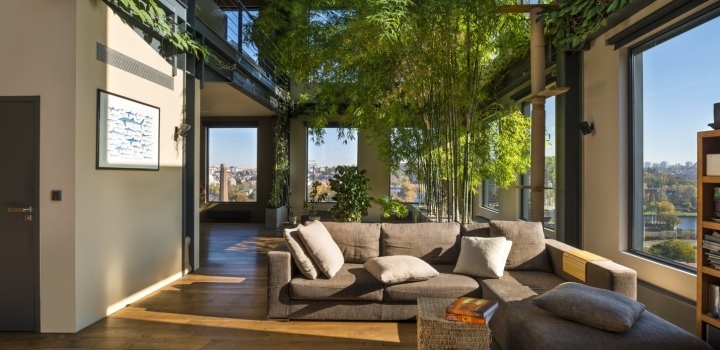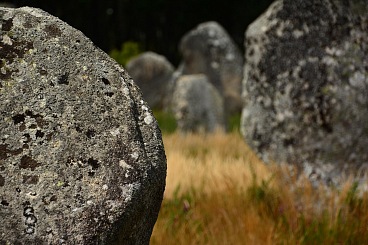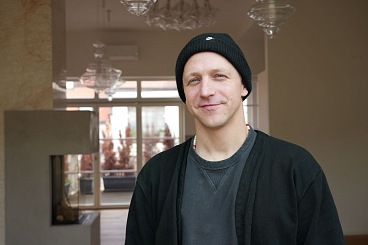A black pearl of modern architecture – the KOTVA department store
A building of the seventies
The building bearing the name Kotva was built from 1970 to 1975. It was named after the neighbouring building of the Kotva Palace on Revoluční. The department store is regarded as one of the most interesting Czechoslovak buildings of the 70s.
Building core – a luxurious hexagon
The building, designed by the husband and wife team of Věra and Vladimír Machonin, has five floors above ground and its ground plan is made up of several interconnected hexagons. The construction system chosen using hexagons with steel frames allows for good development of an irregular ground plan, this also corresponding to the development options. The flat slab reinforced structure made it possible to increase the number of floors in the building. The building shell is made of corroded sheet metal and the ceilings are cast reinforced concrete. The building shell is made of brown solar control glass, fitted into frames with embedded sills and profiled dark aluminium sheet (suspended concrete panels were however originally meant to be used).
Urban planning integration of the “beehive”
The interesting and unconventional design for such a luxury layout and distinctive contemporary architectural expression are consistent with the character of the given surroundings. When the architectural historian Mgr. Lukáš Beran considered the suggestive structure of the Kotva department store, via the symbolism of a beehive, he came all the way to the Beuys-Steiner symbolism of honey as the monetary circulation of society.
A few facts...
When the luxury department store was opened, the sales floor had an area of 22,160 m³ and a total of up to 2,000 employees were supposed to serve approximately 75,000 customers every day. A grocery store opened on the second floor in 1995. A restaurant was built on the fifth floor, together with a luxury works canteen for the administrative space which was considered luxurious at that time. The individual floors were originally colour-coded. The opening ceremony for the department store was finally held in 1975, but on political grounds without the architects themselves. The architectural historian Rostislav Švácha pushed for due appreciation of Kotva, proposing to the Ministry of Culture in 2007 that the building be declared a cultural monument.


